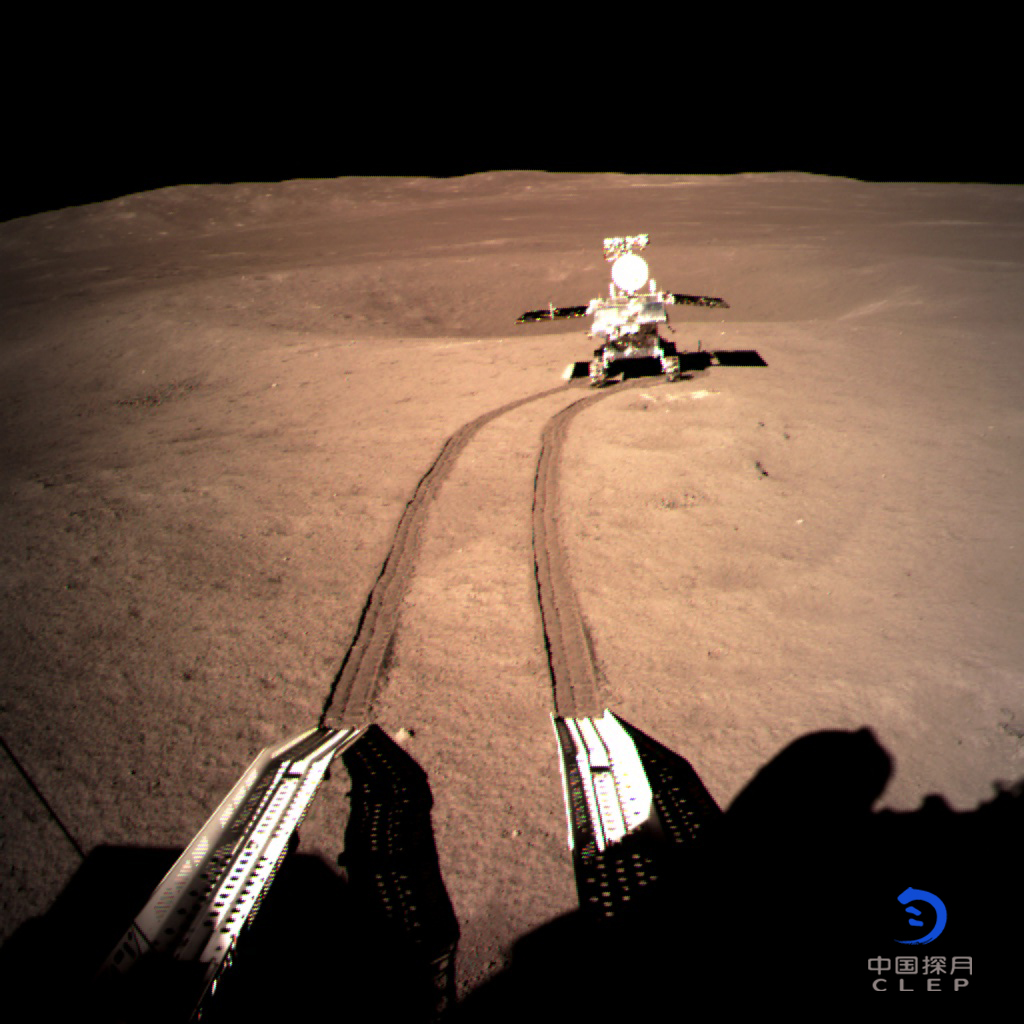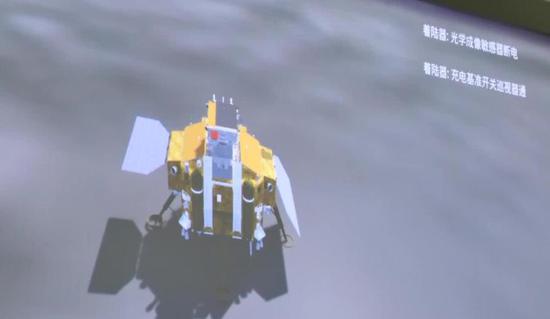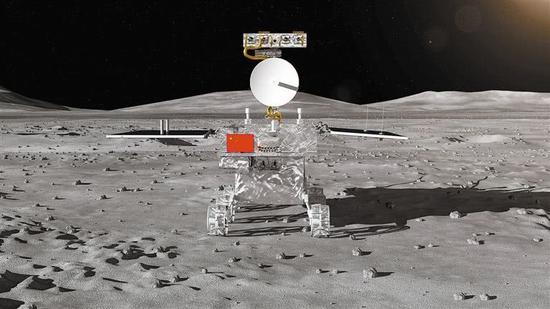Russian are so proud of Chinese success in 嫦娥四号 their news media started to call Chinese OUR COMRADES which is something they stopped doing for decades! 成功了称兄道弟!有面子!
https://mil.news.sina.com.cn/jssd/2019-01-05/doc-ihqfskcn4316959.shtml
俄媒报道嫦娥四号时 用了这句中国人耳熟能详的称呼
俄媒报道嫦娥四号时 用了这句中国人耳熟能详的称呼
45
随着中国“嫦娥四号”成功在月球背面软着陆,成为人类首次在月球背面软着陆的航天器。
世界各大媒体都正面报道了这件壮举,而俄罗斯战略与技术分析中心的官方网站在发文对中国“嫦娥四号”登月进行报道时,用了“祝贺中国同志”的话语,一句“达瓦里希”(俄语“同志”),似乎充满了对过往岁月的感慨!
图片:“嫦娥四号”软着路后,释放出了“玉兔二号”月球车。
众所周知,中国的“两弹一星”计划是完全由中国人自力更生、艰苦奋斗拼搏出来的。但是在早期,苏联曾经对于我国弹道导弹研制工作进行了援助。中国的导弹火箭发展,确实也凝聚了那些苏联专家的心血,在当时,一句达瓦里希,或许就是中国科技人员、军人、工人们懂得第一句俄语!
图片:苏联专家与中国技术人员。
1956年8月17日,中国致函苏联部长会议主席布尔加宁,请求苏联政府在导弹制造、研究和使用方面给予援助。9月13日,苏共回电表示愿意在建立导弹事业方面给予中国援助,同意提供教学用的近程地地导弹,并派专家来华教学,并接收50 名留学生到苏联学习相关专业。
同年10月8日,国防部第五研究院在北京成立,聂荣臻在成立大会上提出,我国导弹研制应以“‘自力更生为主,力争外援和利用资本主义国家已有的科研成果’作为五院的建院方针”。
图片:中国自行研制的探空火箭。
根据中苏双方的前期沟通,1957年9月7日,聂荣臻率领的代表团抵达莫斯科。9日上午,聂荣臻率部分成员拜会了苏联部长会议国家对外经济联络委员会主席、苏联政府代表团团长别尔乌辛。别尔乌辛表示,苏方代表团接受苏共中央交付的任务,任务很重要且艰巨,但苏方将尽量给予中国帮助。后双方各组成了军事、原子、导弹、飞机、无线电等5 个小组进行谈判。
9 月14 日,别尔乌辛向聂荣臻提交了《中华人民共和国政府和苏维埃社会主义共和国联盟政府关于生产新式武器和军事技术装备以及在中国建立综合性原子工业的协定(草案)》,并说:“这种协定在苏联外交史上还是第一次,因为中国是最可靠、最可信托的朋友。希望中国政府能早日定案。”
图片:被称为东风-1的中国首枚弹道导弹,原型是苏联的P-2弹道导弹,也就是大名鼎鼎的德国V-2火箭的苏联发展版本。
10月15日,中苏双方在莫斯科苏联国防部大楼签订了正式协定。随后,苏联按照协定要求于1957 年和1958 年向中国提供了几种导弹、飞机和其他军事装备的实物样品,交付了相应的技术资料和设备,并派出了一批技术专家。在建立综合型原子工业方面也按照协定及合同的规定交付了一部分设备,提供了相应的技术资料,派出了技术专家。苏方人员还在靶场选址、基地建设、人员培训等方面也给予中国积极支持和帮助,为我国导弹航天事业的起步奠定了物质、人力和技术基础。
图片:当时地面靶场有罗布泊和敦煌两个方案,苏联专家从气象上考虑,建议放在罗布泊。
比如,1957 年12 月30 日,以列·米·盖杜柯夫少将为首的17 位苏联专家来华帮助开展导弹试验靶场的勘察设计工作。中苏两国专家在北京研究了选场条件,确定在东北、华北、西北地区勘选陆上导弹综合靶场,在渤海和辽东湾沿岸勘选海上导弹试验靶场。
再比如,按照协定,苏联帮助中国建设火箭与防空导弹总体及发动机研究院,发动机与全弹试验站,空气动力研究所,火箭与防空、飞航式导弹控制系统研究院。1958年1月18日,苏联经济联络总局驻京副代表加里宁率齐琴科夫等12 名专家来华就以上4 个项目的开展进行磋商。中方代表李强、钱学森、王诤、刘秉彦等参加会谈。后来这4 个项目全面进入了建设阶段,奠定了五院北京基地的规模和基础,为我国导弹事业的仿制以及独立研制奠定了物质基础。
图片:钱学森同志是国防五院首任院长,我国早期的仿制导弹和自行研发的国产导弹都是在他的领导和决策下进行的,所以他是“中国导弹之父”。
还有,1957年12月20日,苏联两列火车60个车皮载运P-2型地对地导弹和地面设备到达中国满洲里口岸,为教会中国同志使用、维护,苏联派出以布里奥·伯列任斯基上校为首的102名火箭兵和专家来华任教,教学期为3 个月。
1958年1月11日,教导大队举行了第一期开学典礼上,五院院长钱学森同志在讲话中指出:“对导弹武器装备,我们还是个不会走路的孩子,现在是刚刚起步,我们深信在党中央的正确领导下,在启蒙老师苏联专家的帮助下,经过我们自己的辛勤努力,一定能会走、会跑,成长壮大。”
图片:中国航天事业的开端——长征一号运载火箭就来自于东风弹道导弹技术。
正如钱老的预研,中国导弹航天事业随后进入了蓬勃发展的时代,就算后来由于中苏关系等客观原因,苏联撤走了专家,中国也能够放开手脚自己干!
当然,一句“达瓦里希”,还是让人想到当年苏联老大哥对于中国的帮助,虽然那个时代已经非常久远!而我们中国人,最终凭借自己的聪明才智,在导弹航天领域取得了不弱于当年老师的成就,甚至率先登陆月球背面,青出于蓝而胜于蓝!这也许是俄罗斯同行们用“中国同志”时的感慨吧!(作者署名:虹摄库尔斯克)
图片:中国同志已经走上了自己的航天征程!
The Russian media reported that on the 4th, this Chinese-speaking name was used.
The Russian media reported that on the 4th, this Chinese-speaking name was used.
45
As China's "Chang'e IV" successfully landed on the back of the moon, it became the first spacecraft for humans to land softly on the back of the moon.
The world’s major media have positively reported this feat, and the official website of the Russian Center for Strategic and Technical Analysis used the words “Congratulations to Chinese comrades” when it published a report on China’s “Chang'e IV” landing. Warrich" (Russian "comrade") seems to be full of emotions for the past years!
Photo: After the soft road of "嫦娥四号", the "Yu Rabbit No. 2" lunar rover was released.
As everyone knows, China’s "two bombs and one star" plan is completely self-reliant and hard work by the Chinese. But in the early days, the Soviet Union had assisted in the development of China's ballistic missiles. The development of China's missile rockets did indeed condense the efforts of the Soviet experts. At that time, a Dawa Lich, perhaps Chinese scientists, soldiers, and workers knew the first sentence of Russian!
Photo: Soviet experts and Chinese technicians.
On August 17, 1956, China sent a letter to the Chairman of the Soviet Council of Ministers, Bulganin, requesting the Soviet government to provide assistance in missile manufacturing, research and use. On September 13, the CPSU returned to China and expressed its willingness to provide assistance to China in establishing the missile cause. It agreed to provide short-range ground-to-ground missiles for teaching, and sent experts to teach in China, and received 50 international students to study related majors in the Soviet Union.
On October 8, the same year, the Fifth Research Institute of the Ministry of National Defense was established in Beijing. Nie Rongzhen proposed at the inaugural meeting that China’s missile development should be based on “self-reliance, foreign aid and the use of scientific research results in capitalist countries”. The guidelines for building a hospital."
Photo: China's own sounding rocket.
According to the previous communication between China and the Soviet Union, on September 7, 1957, a delegation led by Nie Rongzhen arrived in Moscow. On the morning of the 9th, Nie Rongzhen led some members to meet with the president of the State Foreign Economic Liaison Committee of the Soviet Council of Ministers and the head of the Soviet government delegation Berthusin. Berwusin said that the Soviet delegation accepts the tasks delivered by the Central Committee of the CPSU. The task is very important and arduous, but the Soviet side will try its best to help China. Afterwards, the two sides formed five groups including military, atomic, missile, aircraft, and radio to negotiate.
On September 14, Berthusin submitted to Nie Rongzhen the "Agreement between the Government of the People's Republic of China and the Union of Soviet Socialist Republics on the Production of New Weapons and Military Technical Equipment and the Establishment of a Comprehensive Atomic Industry in China" (draft). "This kind of agreement is the first time in the history of Soviet diplomacy because China is the most reliable and trustworthy friend. I hope the Chinese government can finalize the case as soon as possible."
Photo: China's first ballistic missile known as Dongfeng-1, the prototype is the Soviet P-2 ballistic missile, also known as the Soviet version of the famous German V-2 rocket.
On October 15, the two sides signed a formal agreement in the Soviet Ministry of Defense building in Moscow. Subsequently, in 1957 and 1958, the Soviet Union provided China with several physical samples of missiles, aircraft and other military equipment, delivered corresponding technical materials and equipment, and dispatched a group of technical experts. In the establishment of a comprehensive atomic industry, a part of the equipment was also delivered in accordance with the provisions of the agreement and the contract, the corresponding technical information was provided, and technical experts were dispatched. The Soviet side also gave China active support and assistance in shooting site selection, base construction, personnel training, etc., laying a material, human and technical foundation for the start of China's missile aerospace industry.
Photo: At the time, the ground shooting range had two plans, Lop Nur and Dunhuang. The Soviet experts considered it from a meteorological point of view and suggested to be placed in Lop Nur.
For example, on December 30, 1957, 17 Soviet experts headed by Major General Leh Giddukov came to China to help carry out the survey and design of the missile test range. Experts from China and the Soviet Union studied the selection conditions in Beijing, and determined to select the onshore missile integrated range in the northeast, north and northwest regions, and to select the offshore missile test range in the Bohai Sea and Liaodong Bay.
For another example, according to the agreement, the Soviet Union helped China to build the Rocket and Air Defense Missile General and Engine Research Institute, the Engine and Full Bomb Test Station, the Aerodynamics Research Institute, and the Rocket and Air Defense and Flight Missile Control System Research Institute. On January 18, 1958, 12 representatives of the Soviet Union Economic Liaison Bureau's deputy representative in Beijing, Kalinin led Zychenkokov, came to China to conduct consultations on the above four projects. Chinese representatives Li Qiang, Qian Xuesen, Wang Wei and Liu Bingyan attended the talks. Later, these four projects entered the construction phase in an all-round way, laying the foundation and foundation of the Beijing base of the Fifth Institute, laying a material foundation for the imitation and independent development of China's missile industry.
Photo: Comrade Qian Xuesen is the first dean of the Fifth National Defense Academy. China’s early imitation missiles and self-developed domestic missiles were carried out under his leadership and decision-making, so he is the “father of Chinese missiles”.
Also, on December 20, 1957, 60 trains of two trains of the Soviet Union carried P-2 ground-to-ground missiles and ground equipment to reach the Manzhouli Port in China. They were used and maintained by the Chinese comrades. The Soviet Union sent Brio Bo. 102 rocket soldiers and experts headed by Colonel Leninsky came to China to teach, with a teaching period of 3 months.
On January 11, 1958, the teaching brigade held the first opening ceremony. Comrade Qian Xuesen, the president of the Fifth Academy, pointed out in his speech: "We are still a child who can't walk on missile weapons and equipment. Now it is just getting started. We are just starting. I am convinced that under the correct leadership of the Party Central Committee, with the help of the enlightenment teachers and Soviet experts, through our own hard work, we will surely go, run, and grow stronger."
Photo: The beginning of China's space industry - the Long March 1 carrier rocket comes from Dongfeng ballistic missile technology.
Just as Qian’s pre-research, China’s missile aerospace industry subsequently entered a period of vigorous development. Even after the objective reasons such as Sino-Soviet relations, the Soviet Union withdrew its experts, and China was able to let go of its own hands!
Of course, a "Davarich" still reminds people of the Soviet Union's big brother's help to China, although that era has been very long! And our Chinese, in the end, relying on their own ingenuity, in the field of missile aerospace, did not weaken the achievements of the teachers of the year, and even took the lead on the back of the moon, blue out of blue and better than blue! This may be the feeling of Russian colleagues when they use "Chinese comrades"! (Author's signature: Rainbow Photo Kursk)
Photo: Chinese comrades have embarked on their own space journey!





